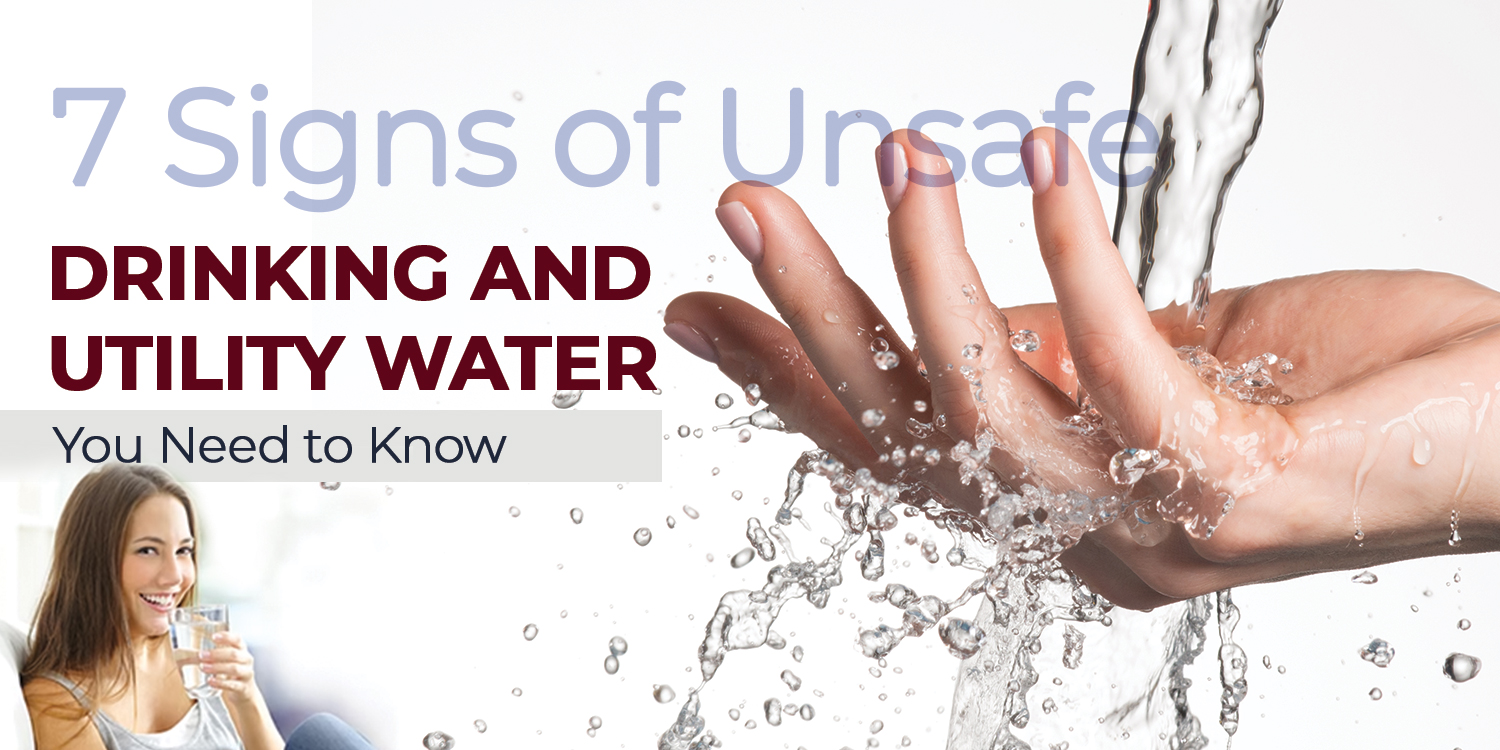Surviving without water is impossible. It makes up 65 percent of the human body, and it helps carry oxygen and nutrients to cells, as well as flush waste out. Most people can only last three days without water before internal organs start malfunctioning.
There is also water contamination that leads to grave illnesses such as Legionnaires’ disease. These water-borne diseases can transpire in considerably “safe” locations, especially with global warming creating erratic weather, an ideal environment for harmful bacteria to proliferate.
The main point here is that you can’t ever be too sure about the quality of the water you are using. You have to know how to spot red flags that indicate your water supply may not be safe and when a water tank cleaning is in order.
To help you with this, listed below are seven signs to keep an eye out for (and a nose and tongue, too) to establish the safe consumption or use of water.
Common Signs of Water Contamination Include
1. There is a Strong Chlorine Smell
Chlorine is a bacteria killer, and water treatment facilities use it often. The body can tolerate small amounts of it, but if the water you use reeks of chlorine, it is best to hold off on using or consuming it.
Too much chlorine in the pool or tap water can lead to allergic reactions and other health issues.
2. There is a Bitter or Metallic Taste
Water is flavorless, right? If it tastes bitter or metallic, then it is unsafe to drink; there may be an issue with the source.
Your plumbing system may have been compromised, or there may be a major problem at your water company. If water tastes funky, spit it out and make a report to the appropriate authorities.
3. There are Floating Things and Other Sediments
Unless you are drinking herb or cucumber water, there shouldn’t be any floating things or sediment in your drinking water, especially if it has gone through proper water treatment.
If there is sediment in your tap water, this is an indication that the water main is busted, allowing particles to mix with the water distributed to your home.
4. The Water is Cloudy
Cloudy water may not always pose a serious health risk, but it’s better to be safe than sorry.
Water should always be clear even if it has a significant amount of minerals and other naturally occurring substances. A report should be made if “cloudiness” continues after letting water run for some time.
5. The Presence of Scale, Sludge, Biofilms, and other Organic Matter
Whenever water is allowed to sit or stagnate for an extended period, various substances like sludge, scale, and biofilms can accumulate. These components create an ideal environment for bacterial growth. Therefore, it’s crucial to minimize water stagnation and ensure proper water circulation to maintain water quality and safety.
Read More: Health Benefits Of Honey Lemon Water
6. The Water is Rust-Coloured
Minimal rust in your water is generally not a significant health concern, but the discoloration can be unappetizing. Water used for bathing, cooking, and drinking should ideally be clear and free from any orange or brownish tint. If you notice such discoloration, it’s advisable to report the issue to your water company and consider using purified bottled water for consumption and cooking until the matter is resolved. This proactive approach ensures the safety and quality of your water.
7. There is Oil on Top of Standing Water
The presence of oil in your water supply suggests a potential leak, which is especially relevant if your primary water source is a well. If you notice any signs of oil in your water, it’s crucial to report this issue to your local water authority promptly. Addressing such concerns promptly can help ensure the safety and quality of your water supply.
Read More: Health Benefits Of Coconut Water For The Body
Tips for Preventing Water-Related Health Problems
Now that you know the signs of unsafe water to drink and use, there are ways for you to protect yourself even better from falling ill due to unclean water, both inside and outside your home:
At Home
- Have your water tank periodically cleaned and disinfected. If there are still any of the above telltale signs of unclean water, call an experienced plumbing service for a proper inspection.
- Invest in water purifying systems and powerful cleaning agents for your taps, showerheads, hot tubs, and pool.
- Ensure that stored water temperature is maintained either below 20°C or, if part of a hot water system, above 60°C.
- Replace stored water in tanks, pressurized water bottles, and other containers regularly when it’s warmer.
Outside
- If you’re unsure about the water quality, choose sodas and colas as alternatives.
- When eating at restaurants in a place where you have been warned about poor water quality, always do without the ice in drinks.
- Avoid salads and raw dishes in places where water is unsafe to drink. Just stick to thoroughly cooked dishes because cooking can kill some, if not all, bacteria in the water.
- Stick to bottled water at all times and make sure it’s completely sealed when you purchase or get it.
Health is wealth. So, make sure that the water you consume is truly supportive of your safety and good health

Leave a Reply
You must be logged in to post a comment.